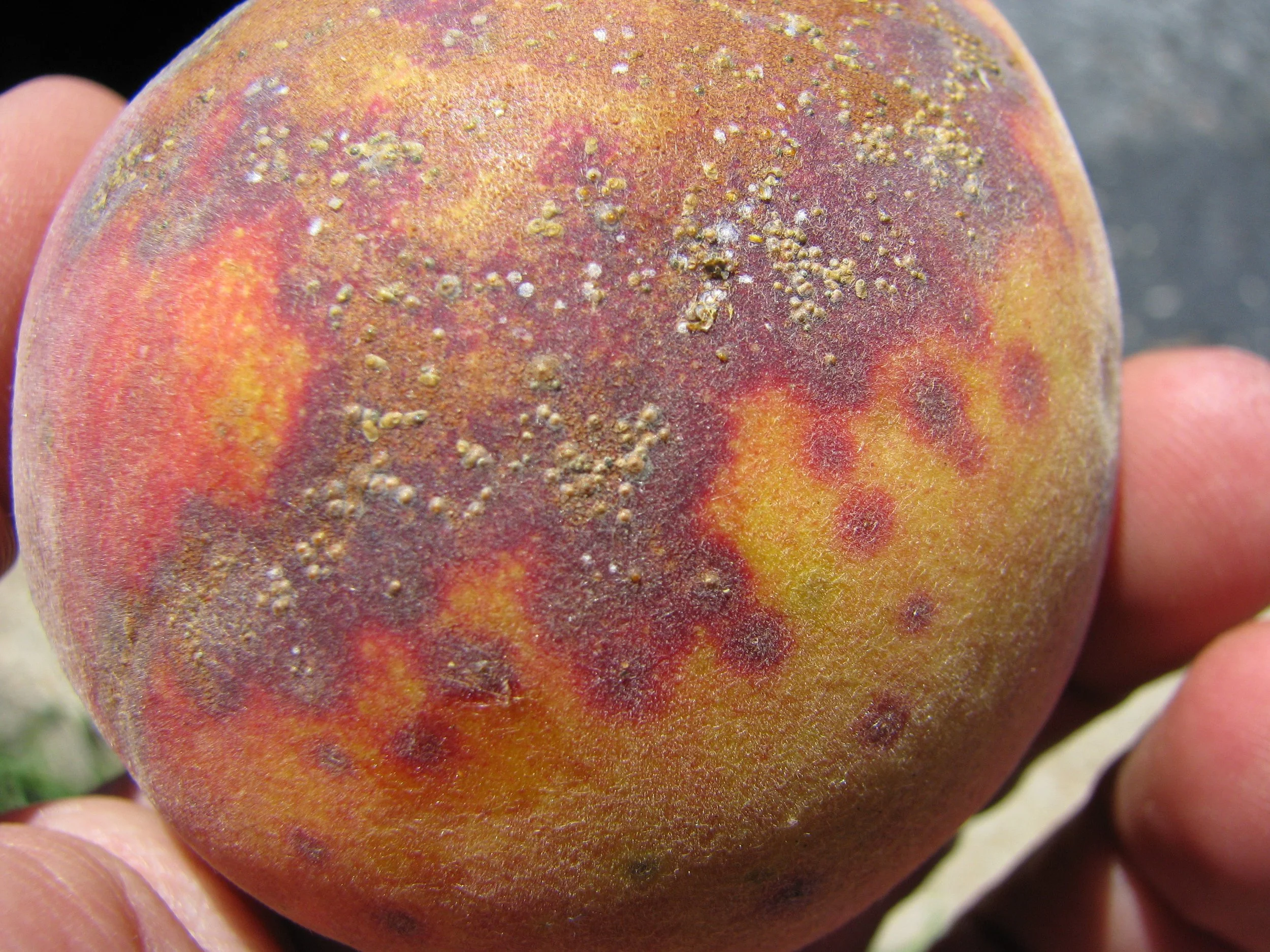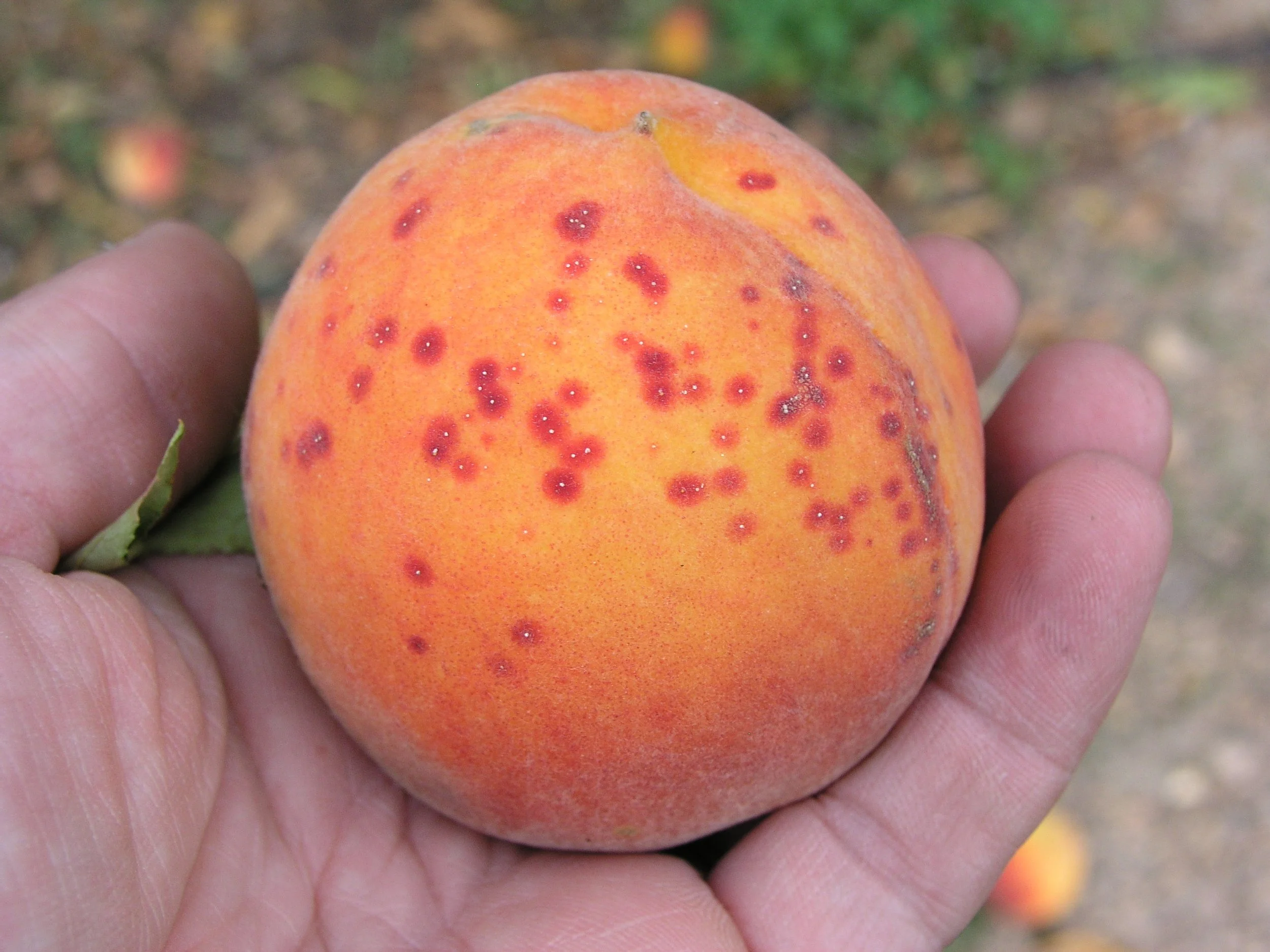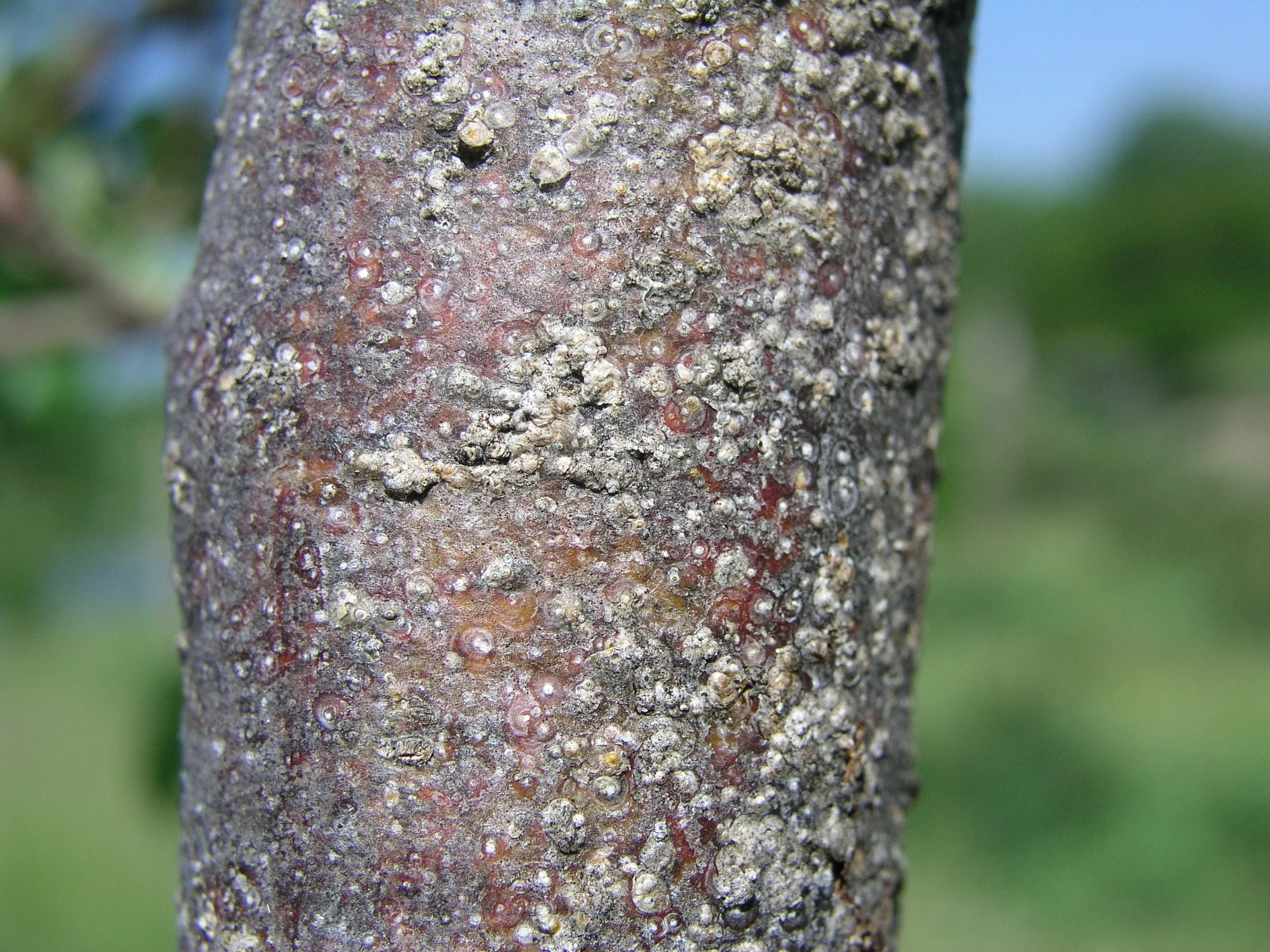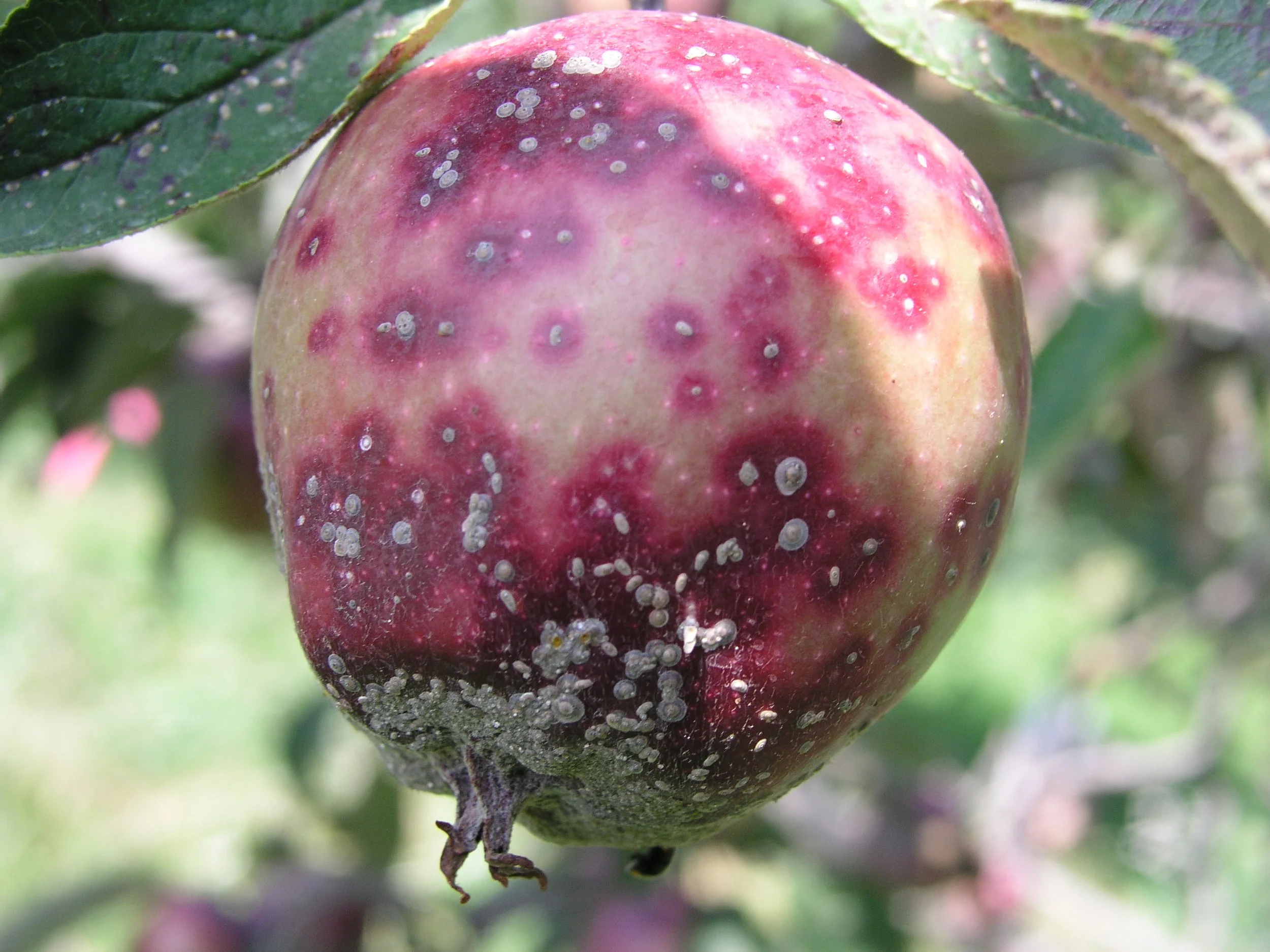San Jose Scale (Quadraspidiotus perniciosus) is a barnacle-like insect that feeds on tree sap. San Jose scale is most destructive to apple and pear trees, but it can affect other fruit and nut trees, as well as some berries.
For region-specific information, please contact your local Giving Grove partner. If you would like more information like this sent straight to your inbox, consider subscribing to The Serving, The Giving Grove’s quarterly newsletter.
Appearance:
The adult female San Jose Scale is wingless, legless and lives under a protective scale on the twigs, limbs, branches and sometimes fruit of fruit plants
The adult male is a very small, yellowish-tan insect with wings and long antennae.
The larval stage, called a crawler, is very tiny with a yellow body, six legs, two antennae, and a bristle-like sucking beak. Young crawlers insert their long mouth parts into twigs and branches and suck the sap. They also secrete a waxy filament that becomes a permanent scale covering.
Damage:
Damage is usually first noticed when infested fruit develop reddish purple rings around each spot where a scale has settled.
If left untreated, trees can become seriously damaged resulting in reduced production, thin foliage, damaged branches, and potentially death of the tree.
Young trees may die before producing fruit.
Management & Treatment:
Record where damaged fruit was noted before or during harvest. Monitor trees during the dormant period by checking prunings for scaling.
Dormant oil suffocates the majority of a serious scale issue if numbers get ahead of natural parasites. Make sure the dormant oil spray covers the entire tree.
Natural enemies that feed on San Jose scale include the twicestabbed lady beetle and the Cybocephalus californicus beetle. A number of small chalcid and aphelinid wasps parasitize this scale.
Utilize pheromone traps to monitor activity. Pheromone trapping involves the use of chemical lures to attract male scales. Black electrician’s tape can also be used (sticky side out) to trap crawlers, but must be inspected carefully to see tiny yellow spots.
Sources: Michael Phillips, “The Holistic Orchard”, UC-IPM, Washington State University, and Patrick L. Byers, Horticulture Specialist






